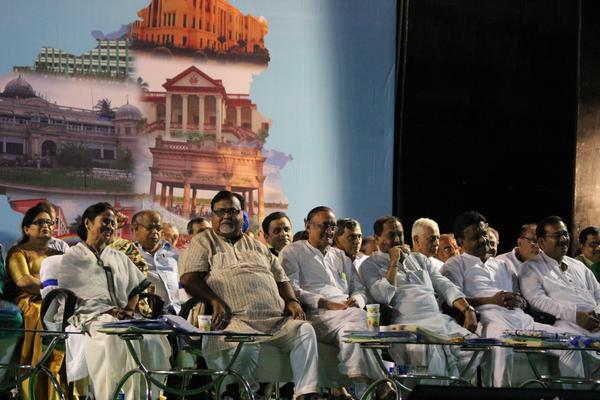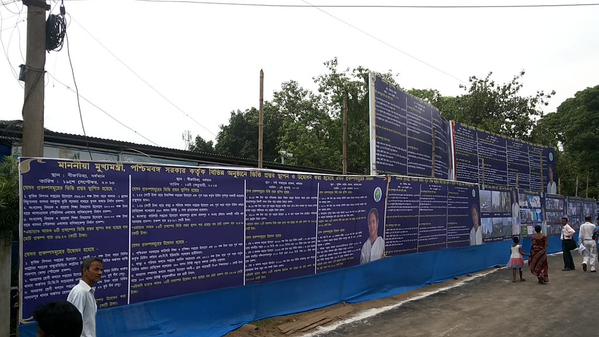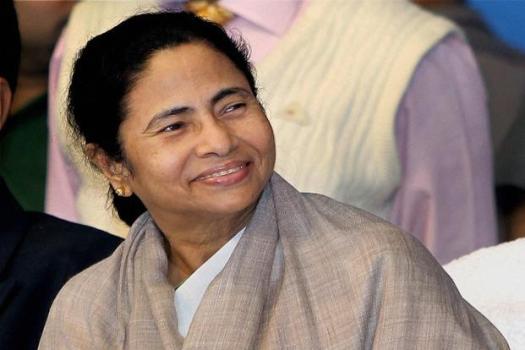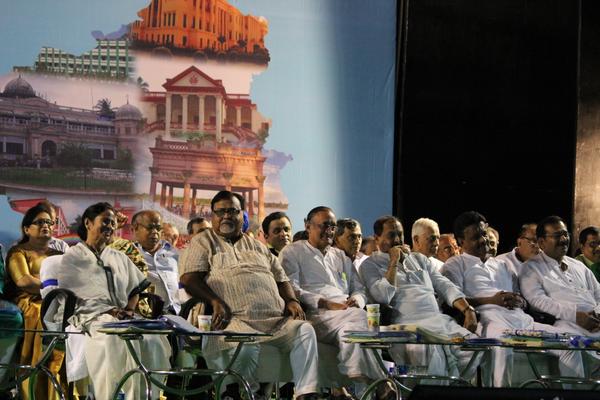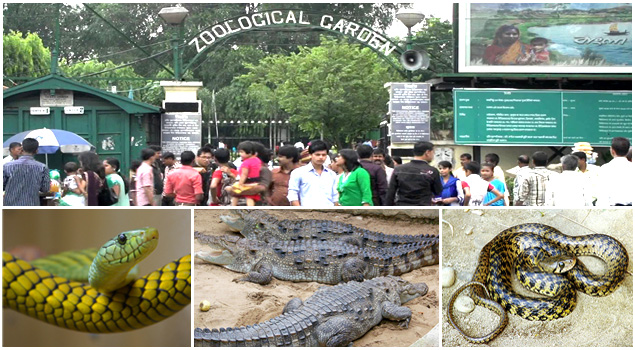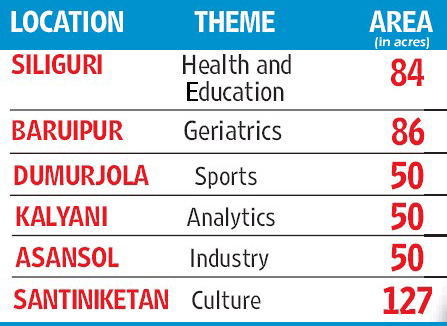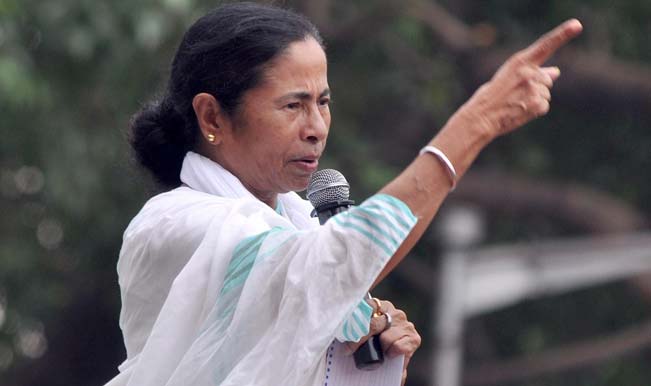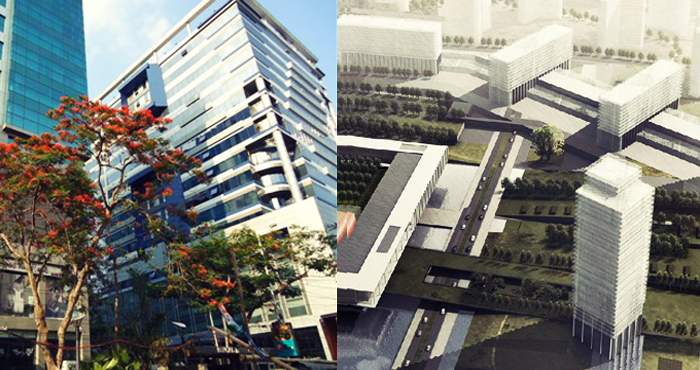The West Bengal Government today conducted the 100th Administrative Review Meeting of the districts in a big way with the launch of 100 schemes.
The Chief Minister inaugurated and laid the foundation stones of 100 projects and will distributed benefits to 100 people from the stage.
The projects are from the departments like Education, Health, Irrigation, MSME, SHG, Agriculture, PWD (flyovers and bridges), Women and Child Development, Urban Development.
The 100th administrative review meeting today was attended by all Cabinet Ministers, MPs and MLAs, secretaries and officials of all the departments, panchayat heads and district level officials.
The State Government had invited a galaxy of dignitaries, heads of different Banks, vice chancellors of all the State Universities and other distinguished personalities.
The hundred projects are as follows:
Inauguration
• Drinking water supply project at Gourbazar-Ichhapur, Jagara-Jagannathpur and at Ward No 4 of Guskura Municipality
• Pipelined drinking water supply project at Kulti on Kalnai II block, Madhabpur and at adjacent mouzas of Jamalpur block
• 33/11 KV power station at Kalikapur in Durgapur-Faridpur Block and at Ramnagar in Aushgram-ll Block
• Pather Sathi (Motel) at Guskura
• Concrete bridge over Damodar main canal at Belgram in Galsi-ll Block and over No 1 branch of the Eden canal in Memari-I Block
• Power administrative building at Kalna
• Desiltation of G-2 canal at Memari Block
• Construction of Metalled road from Jamtala Bus stop to Amirpur Village
• New office buildings for the block land & Land Reform Officers of Raina-I & ll, Khandaghosh, Memari-ll, Manteshwar and Kanksa Block
• Agricultural implements hiring centre of Belari Co-operative Agricultural Development Society Ltd.
• Construction of Maathnullah at the mouzas of Chandul, Jhinguti, Kashimpur, Amar in Bardhaman I Block
• Construction of Maathnullah at the mouzas of Paraj, Pursa, Bhasapur, Khuraj, Potna Jagulipara in Galsi I Block
• Construction of Maathnullah at the mouzas of Aligram and Diyasa in Aushgram I Block
• Construction of Maathnullah at the mouzas of Jalalpur, Dariyapur, Panduk, Gopalpur, Maliyara, Ramnagar, Chandipur, Bahadurpur and Eral, in Aushgram II Bloc
• Construction of Maathnullah at the at the Bashishtapur mouza in Jamalpur Block
• Construction of Jorebandh at Jeetpur in Salanpur Block
• Major river water irrigation project at Siyali-Ill in Jamalpur Block and at Subaldaha in Raina-ll Block
• Medium riverwater irrigation project at Kamalnagar in Purbasthali-II Block
• Flood relief camp at Jamalpur Block
• Food & Supplies Godown at Galsi-ll, Kalna-I, Mangalkot, Manteshwar, Bardhaman-I Katoa-I, Ketugram-ll, Purbasthali-I, Bhatar, Memari-I and Aushgram-I Block
• Extension of Library Building of Durgapur Government College
• Boys’ Hostel of Sehara Bazar Rahmania Welfare Trust
• Minorities Girls’ Hostel of Asansol Municipal Corporation and in Kadampukur & Mangalkot High Madrasa
• Agricultural College at Susunia in Bankura
Laying of Foundation Stone
• Multi Super speciality Hospital at Kalna
• Development of the infrastructure including roads in the Industrial Hub of Panagarh
• Court building and Bungalow at Asansol
• New building in Bardhaman Municipality
• Renovation of the bridge over Banka river at Birhata
• 33/11 K.V. Power Sub-Station at the Industrial Hub of Panagarh
• Bus Stands renovation at Maldanga and Kusumgram in Monteswar Block
• Construction of the roads from Chhora MSK to Chhora colony in Aushgram-ll Block, from National Highway-ll to Andal Police Station in Andal Block, from Laskarbandh to Bangram at Durgapur-Faridpur Blcok and from Morgram Statehighway to Amindanga in Kanksa Block
• Construction of metalled roads from Suri to National Highway-ll atJhinguti in Bardhaman—I Block and from Khanpukur Bankmore to Rayan village
• Construction of cement concrete roads from Senraleigh Crossing to Kapatia Scheduled Tribe village in Asansolo Construction of concrete roads at Sukantapally in Belkash Gram Panchayet in Bardhaman-I Block and from Shantipara Mandirtala in Saraitikar village to Bhasapara Children Education Centre 0 Strengthening of roads from Nutanhat to Phutisanko crossing
• Strengthening and expansion of the roads from Kumarpurto Chakta, from Guskara to Kasemnagar, from Asansol to Barakar (GT. Road] and from Chhora to Bhatkunda to Mankaro Development ofthe roads from Rasulpur to Khandaghosh to Chalkpurohit, Palsit Nabasta in Memari-I Block, from Baharan to Salar in Ketugram—II Block, from Shreebati to Terrakota Temple in Katwa—II Block and the Siladhaora road adjacent to the old B.D.0. Office in Barabani Block
• Development of the Metalled roads from Panchgachhia Bank crossing to Kamala Girls High school and from Panchgachhia Hindi School to Manoharbahal village via P.M.V.V. High School
• Illumination of the roads from Nababhat to Go|apbag—Purbasha Bus Stand — Po|iceline—Parabirhata crossing
• Piped lined drinking water supply project at Pubar and adjacent in Aushgram -ll Block
• New office buildings for the block Land & Land Reforms Officers in Bardhaman-I, Ketugram-I, Purbasth-ll and Durgapur-Faridpur Block 0Krishi Bhawan in Bardhaman Sadar Block
• Embankment of the left sided main canal in Galsi—I Block, at the left bank of the Damodar in between Amarpur Ghat and Nabokhando Ghat, at the right bank of the Damodar near Aamrul village in Khandoghosh Block and at the left sided main canal i Durgapur-Faridpur & Kanksa Block
• Reconstruction of concrete Bridges overthe panagarh branch canal in Galsi — I block and the left sided main canal at Adrahati village in Golsi — ll Block
• Upgradation ofthe Primary Health Centre at Kanchannagar in Bardhaman Municipal area and of Municipal Maternity Home in Jhurjhurpul, Alamgunge
• Rural Haat (Karmothirtho) at Haatgachha, Kalyanpur Gram Panchayat in Kalna-II Block
• Dwelling House for the Homeless people at Asansol Municipal Corporation area and installation of compactor Machine
• Construction of concrete roads and sewerage system at Subhash Palli in Durgapur Municipal Corporation area and at Saptarshi Park in Durgapur-Faridpur Block
• Renovation & Reconstruction of Silampur Primary Health Centre in Kanksa B|ock
• Boys’ Hostel (2nd Phase) for Hazrat Manikpir Samaj Vikash Kendra
• Katwa Modern Multi Disciplinary Veterinary Hospital
• Office of the Block Animal Resources Development Officer and Veterinary Health Centre in Purbasthali-I Block.
Providing Services
• Kanyashri
• Shikshashri
• Geetanjali
• Loan under Swami Vivekananda Swanirvar Prokalpo
• Gatidhara
• Nijo Griho Nijo Bhumi
• Aamar Fasal, Aamar Gari
• Aamar Fasal Aamar Gola
• Parivar Suraksha Prakalpo
• Ex—gracia Grant
• Assistance to the farmers affected by hailstorm
• Subsidy for construction of centres for hiring agricultural implements
• One time grant for electrification of the pumpsets to be used in irrigation for agriculture
• Distribution of agricultural implements on subsidy
• Assistance for harvesting flowers and vegetables in protected manner in the polygreen house
• Distribution of sports equipments
• Mahila Samriddhi Yojona
• Loan to scheduled caste finance and development project
• Identity cards for artisans
• Financial assistance to educational institutions for purchasing of sports equipments
• Distribution of hygienic thermo-insulated boxes, cycles fitted with hygienic thermo-insulated boxes and vehicles for carrying fish to the fish sellers
• Assistance to the workers in unorganised sectors under Provident Fund scheme
• Assistance to the construction and transport workers under social security scheme
• Financial Assistance to the folk artistes
• Equipments for handlooms
• Distribution of cycles
• Term Loan
• Indira Abas Yojona




